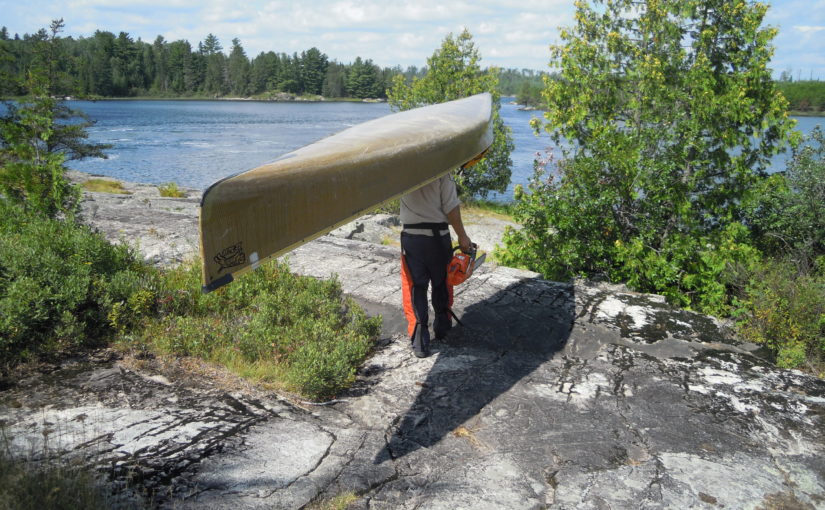Today’s post comes from Chris Stromberg, Acting Backcountry Operations Specialist at Quetico Provincial Park and Coordinator for the Heart of the Continent.
This August, backcountry and wilderness ranger crews from Quetico Provincial Park and the Kawishiwi Ranger District of the Superior National Forest joined forces to maintain and improve a number of shared portages along the Canada/US border near Carp Lake and Knife Lake.
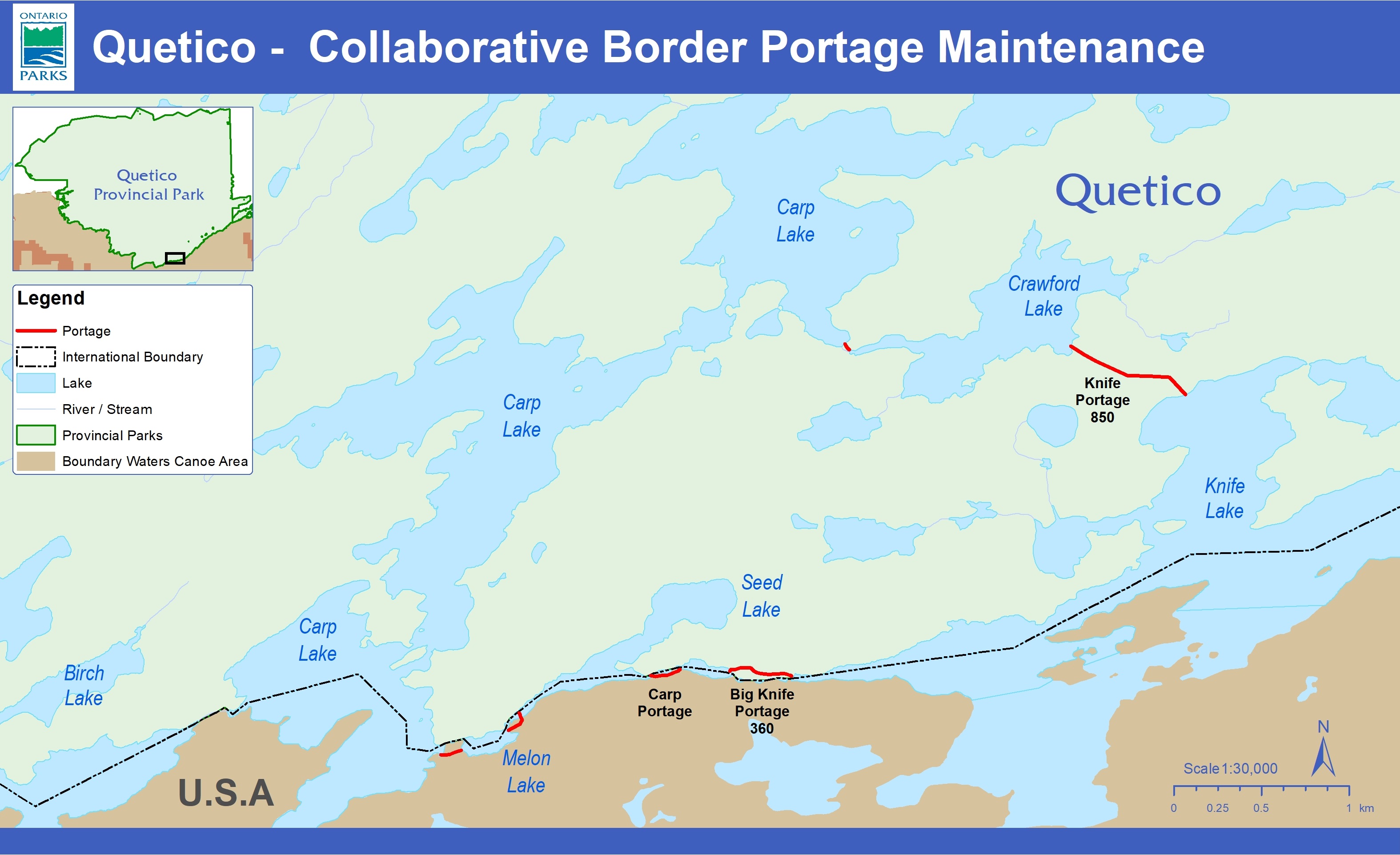
The international team met late in the day on August 8 on Carp Lake. After finding campsites for the evening, they paddled through the project area, pinpointing problem spots to improve.
Their purpose? To restore the tread of high-use portages and to keep Boundary Waters Canoe Area Wilderness (BWCAW) and Quetico Provincial Park visitors on a sustainable improved tread, preventing further erosion.
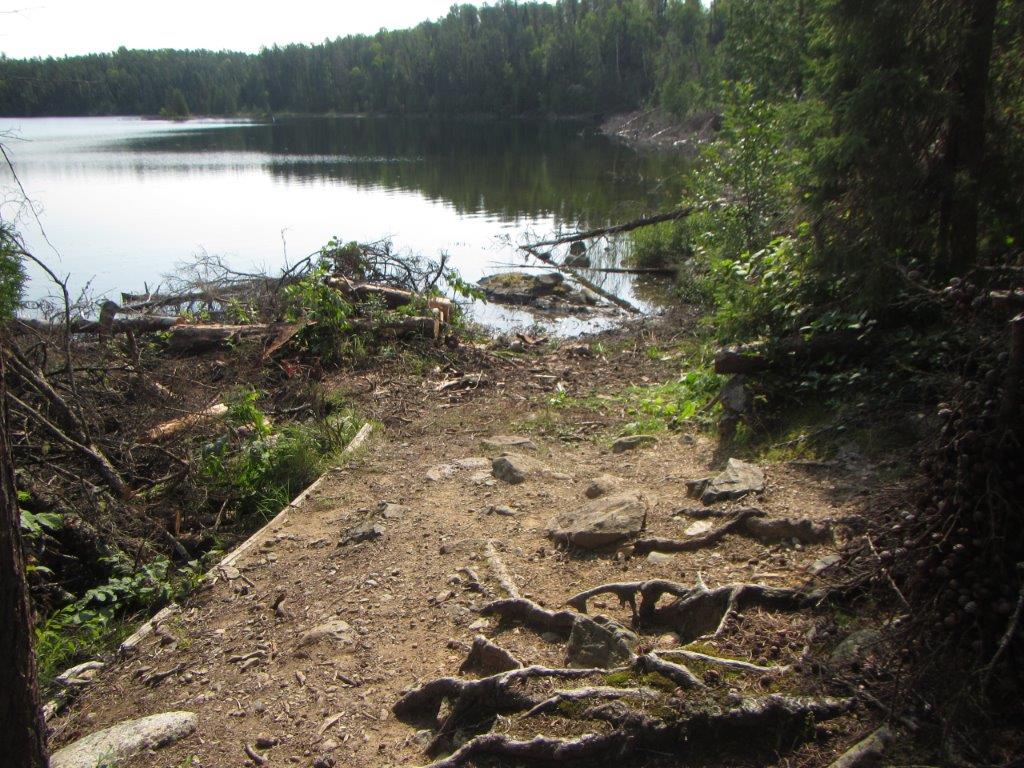
This was a learning experience for the younger crew members from Quetico Provincial Park, who got some hands-on experience while learning the trail-building techniques and skills practiced by the more seasoned American crew.
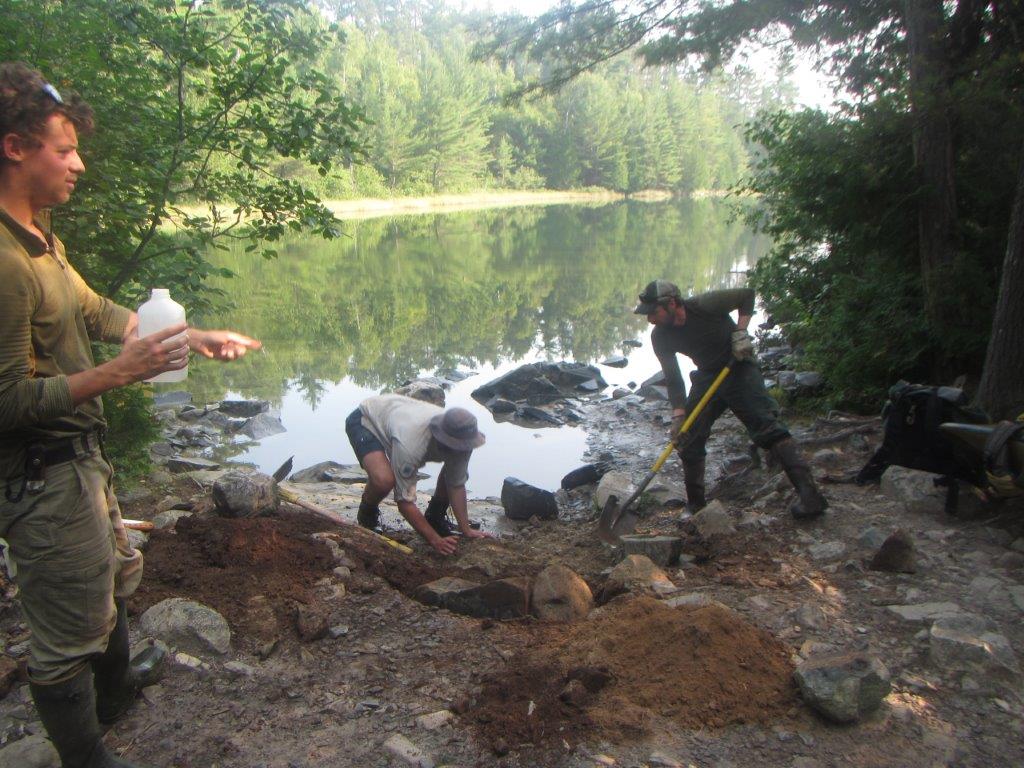
Expert advice
Thompson Blodgett and AJ Neilan from the United States Forest Service (USFS) led this project, joined by Michael Davidson, Brandon Allen, Laura Humphrey and Dustin Jeffrey from Ontario Parks.
Thompson worked in the BWCAW for a number of years; his eye for evaluating trails and well-tuned experience was a huge asset to the project. He provided guidance and techniques to the energetic young ranger crew from north of the border. Picking the right rock, finding ideal soil, and using the best tools at hand were all part of this collective trail work.
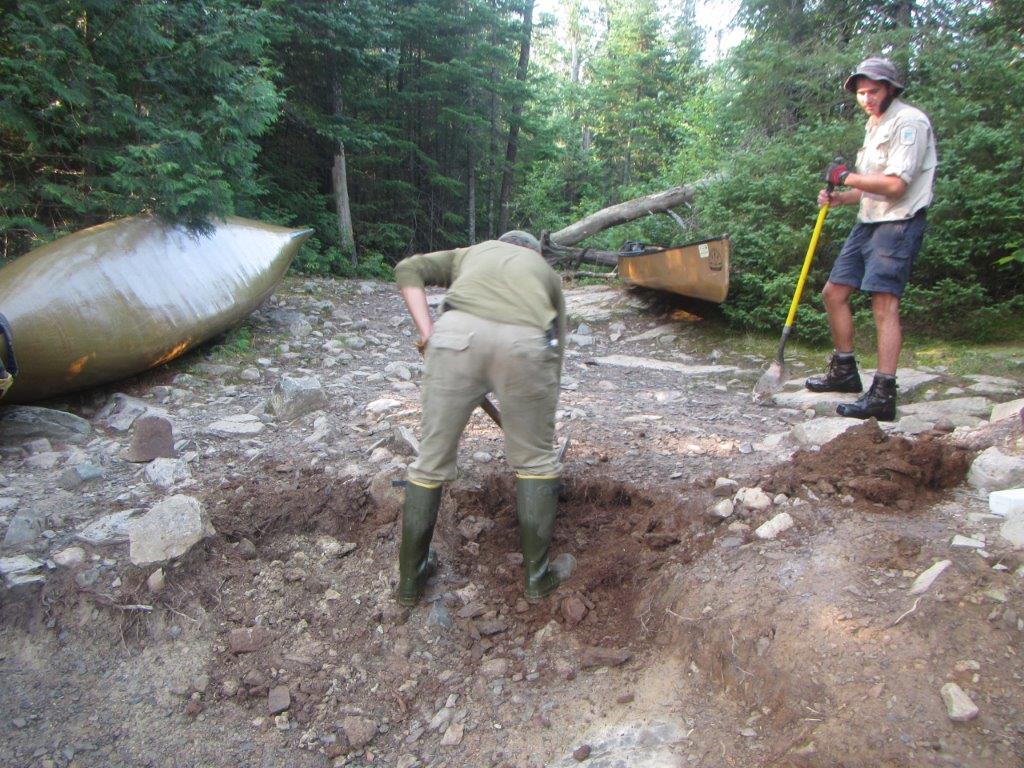
The joint team was able to give significant attention to five short portages along the border and, in addition, make some quick improvements with corduroy to another 850 m portage off of Knife Lake.
In total, over 1,500 m of portages received major improvements (to our American friends, Google it if you want to know how many rods that is). Trail improvements included check-dams, water bars, and reshaped drains.
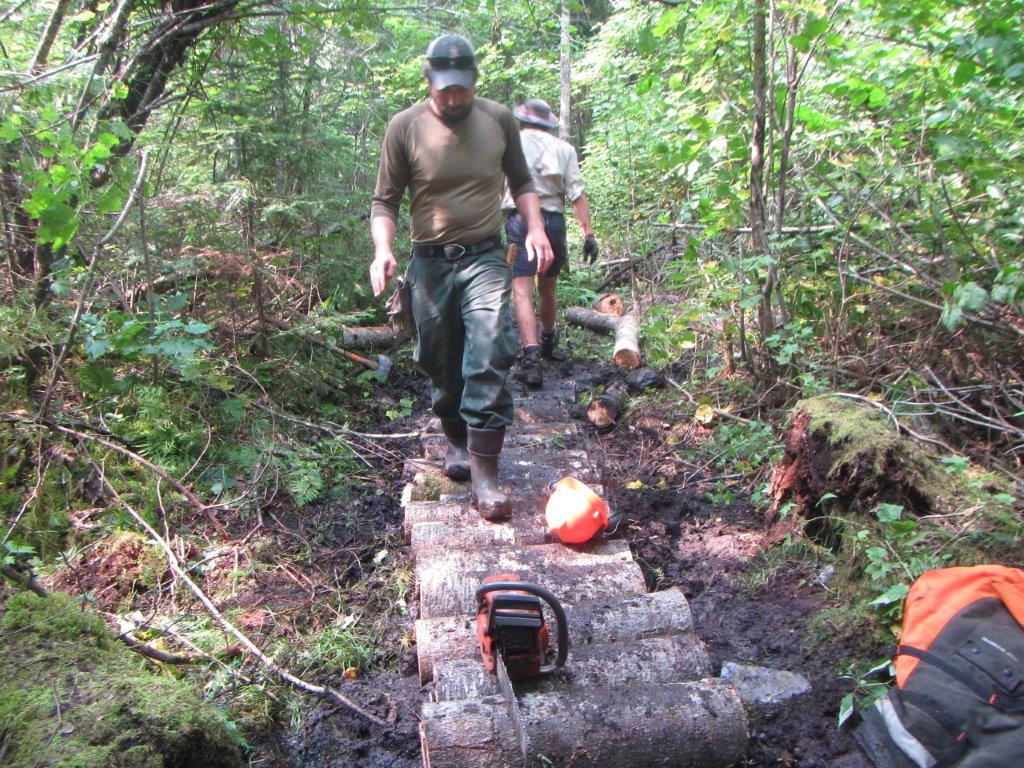
In addition to making trail improvements, the ranger crews shared skills in:
- paddling
- low-impact camping techniques
- trail maintenance and primitive tools
- safety practices
- interaction/public contact with visitors
The 30°C+ temperatures also demanded the crews share their impressive swimming skills at the end of each portage
Bonding over hard work
The international team of rangers enjoyed working together. It was a successful and rewarding venture, and is a continuation of the strong bond between Quetico Provincial Park and Superior National Forest/ Boundary Waters Canoe Area Wilderness.
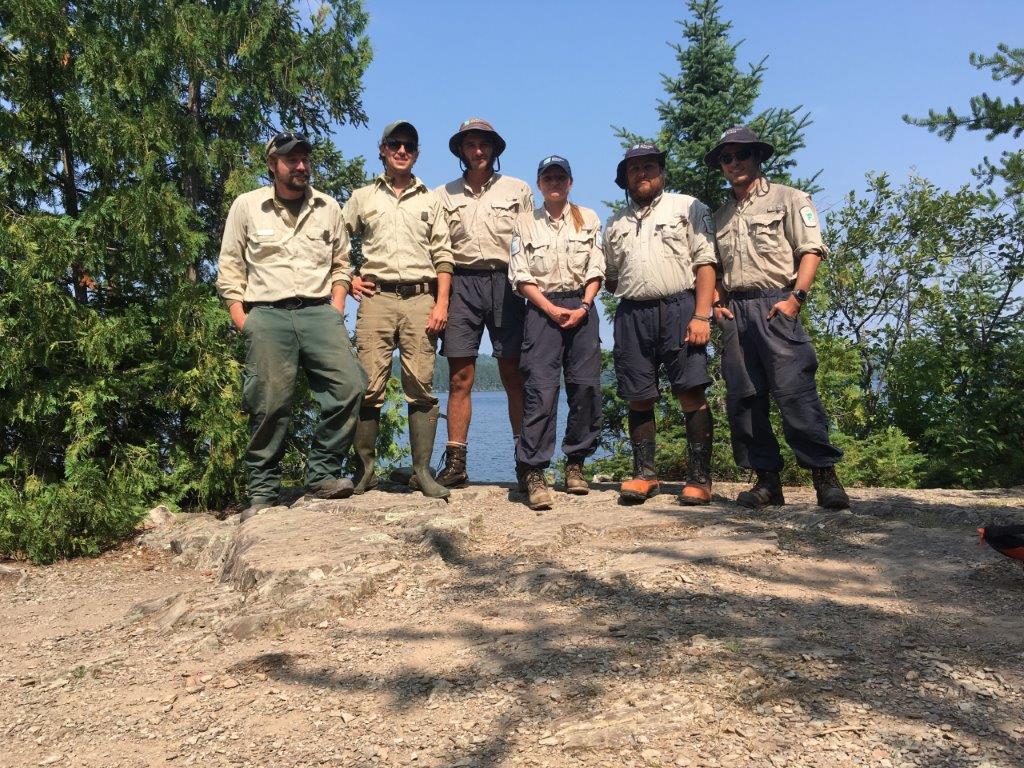
Thompson, the USFS wilderness ranger, has since returned to the portages and was pleased with the results. “They are all holding up well, and I was especially pleased with the work on the Seed Lake side of the portage to Melon Lake. While we installed some very large rocks, they do not look landscaped and are doing a good job of holding the landing in place while retaining the wilderness character of the area.”
Thank you!
The following have all benefited from cooperation concerning the management of parks, forests and other protected natural and cultural heritage sites for the purpose of conservation, preservation, recreation, and public education:

- Quetico Provincial Park
- La Verendrye Provincial Parks
- Superior National Forest
- Grand Portage National Monument
- Voyageurs National Park
- Minnesota Department of Natural Resources Northeast Region
The national park, national monument, national forest, and provincial parks are signatories to a Sister Sites Arrangement which helps to make work, such as the project described in this article, possible.
Many thanks to the wonderful staff and volunteers for all their hard work keeping our parks looking beautiful for years to come!
